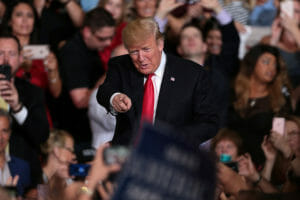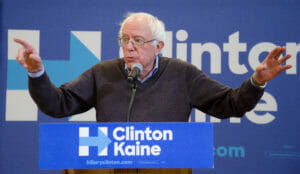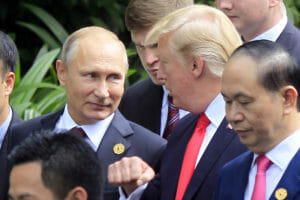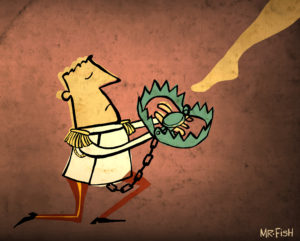Off the Beaten Campaign Trail
Just as the Iowa caucuses were hitting their boiling point, Truthdig's indefatigable campaign correspondent Bill Boyarsky high-tailed it to New Hampshire to check out the next electoral battleground. Here he takes stock of the frenetic scene he just left and looks to the future of political reporting.MANCHESTER, N.H. — I beat it out of Iowa just ahead of the more than 2,500 journalists arriving for Thursday’s caucuses.
“You’re going the wrong way,” said an Iowa-bound media friend I ran into at O’Hare Airport in Chicago.
He had a point. Why was I leaving the racetrack before the horses crossed the finish line? Why not stick around to report the results?
To boil it down to its simplest terms, flight from Iowa was a rebellion against the unchanging, old-fashioned way politics are covered. As a colleague once told me, “If there are a hundred people covering a story, I don’t want to cover it.”
Like much of the career advice I’ve been given, this tip has its limitations. Reporters following it would miss untold numbers of wars, World Series and assassinations, but the man had a point. The greatest challenge for a reporter, and the most interesting experience, is to find a good story alone, away from the pack.
The idea of looking for news outside of Iowa occurred to me last week when I was jammed into the crowd of reporters, photographers and video crews covering former Arkansas Gov. Mike Huckabee in the Signature Grill in Indianola. It had been a long time since I had been in middle of the journalistic mob, and I was pleased I still could take notes in such adverse conditions.
Huckabee made the news that day with a sharp attack on Mitt Romney, the former governor of Massachusetts who, according to the polls, had been hurting Huckabee with his own attacks. It was good stuff, but I was more interested in watching the other reporters.
I’ve lectured my journalism students at USC on the skills they need in the new multimedia world, in which their bosses would want them to report, write, shoot video, record audio and blog — all on the same assignment. This was my first chance to see how it worked.
A news service photographer was shooting video with a still camera attached to his belt. “I work twice as hard and I don’t make any more money,” he complained to a colleague. Later, I spotted a print reporter showing off a small video camera, one that could easily be plugged into a laptop.
The problem is that technical adeptness does not give a journalist’s work any more depth.
Nor do many of the other new developments in campaign reporting. Take, for example, the reportorial blogs. It’s not enough now to report a story. You’ve got to send in a personal blog: “My Day on the Campaign Trail.” Most of these are accounts of driving through the snow, dinners and drinks with colleagues and random thoughts that occur while hearing another rendition of a candidate’s speech. It’s pretty hard to see their value.
There are, in fact, better ways to use new media.
For example, I like the Iowa Independent, a non-traditional Web site started last year by the Center for Independent Media, a Washington-based organization that trains online journalists and bloggers. The center also sponsors Web sites in Colorado and Minnesota.
The managing editor in Iowa is Chase Martyn, 22 a recent philosophy graduate of Grinnell College. Martyn was a blogger and a Democratic field organizer when he was picked to run the Independent. A team of part-timers was hired around the state. “We have people with geographic diversity. They are all part of the community,” Chase told me. “We are able to cultivate sources more than the national media.”
One example of the Independent’s enlightening stories was Lynda Waddington’s interview with Jason Hedges of Cedar Rapids, who worked for a telemarketing firm employed by both Republican Rudolph Giuliani and Democrat Hillary Clinton.
“It would be a little strange to start off some mornings forcefully telling people that we can’t afford to have Hillary Clinton in office and then, by the end of the day, be having these easy conversations supporting Clinton,” Hedges told Waddington. “But that was my job.”
Another idea for new media technology would be to use it for combining polling, demographic information, statistics, computer analysis, interviews and other reporting put together with analytic writing to explore the nation’s hopes and fears instead of having reporters filing blogs.
I know that reporters feel comfortable in a pack, all reporting the same speech they have heard many times before, trying to wring new meaning worth of a headline. I used to do that. And I wrote the stories of who was winning and losing on a particular day or week. I thought at the time that this was what the public wanted.
Looking at it from the outside, I don’t think the public cares as much as the reporters do. One day in a coffeehouse in Cedar Falls, I invited myself to sit down at a table occupied by Norbert Fliss and Larry Pritchard, both retirees from John Deere, the farm equipment manufacturer. I asked them if they were going to the caucuses. They said they weren’t.
What was on their mind? Fliss was worried about his health insurance. He was afraid the company might be cutting back benefits for salaried retirees. They were both independents, undecided on whom to support in November. Neither favored a pullout from Iraq. Nor were they especially opposed to rough questioning of suspected terrorists.
They didn’t say anything sensational. But opinions such as theirs, combined with others, reported, and analytically written, will tell the real story of the primaries ahead and of the presidential election in November. It would be a perfect combination of the new media and old and a worthy use of reportorial talent.
Your support matters…Independent journalism is under threat and overshadowed by heavily funded mainstream media.
You can help level the playing field. Become a member.
Your tax-deductible contribution keeps us digging beneath the headlines to give you thought-provoking, investigative reporting and analysis that unearths what's really happening- without compromise.
Give today to support our courageous, independent journalists.




You need to be a supporter to comment.
There are currently no responses to this article.
Be the first to respond.